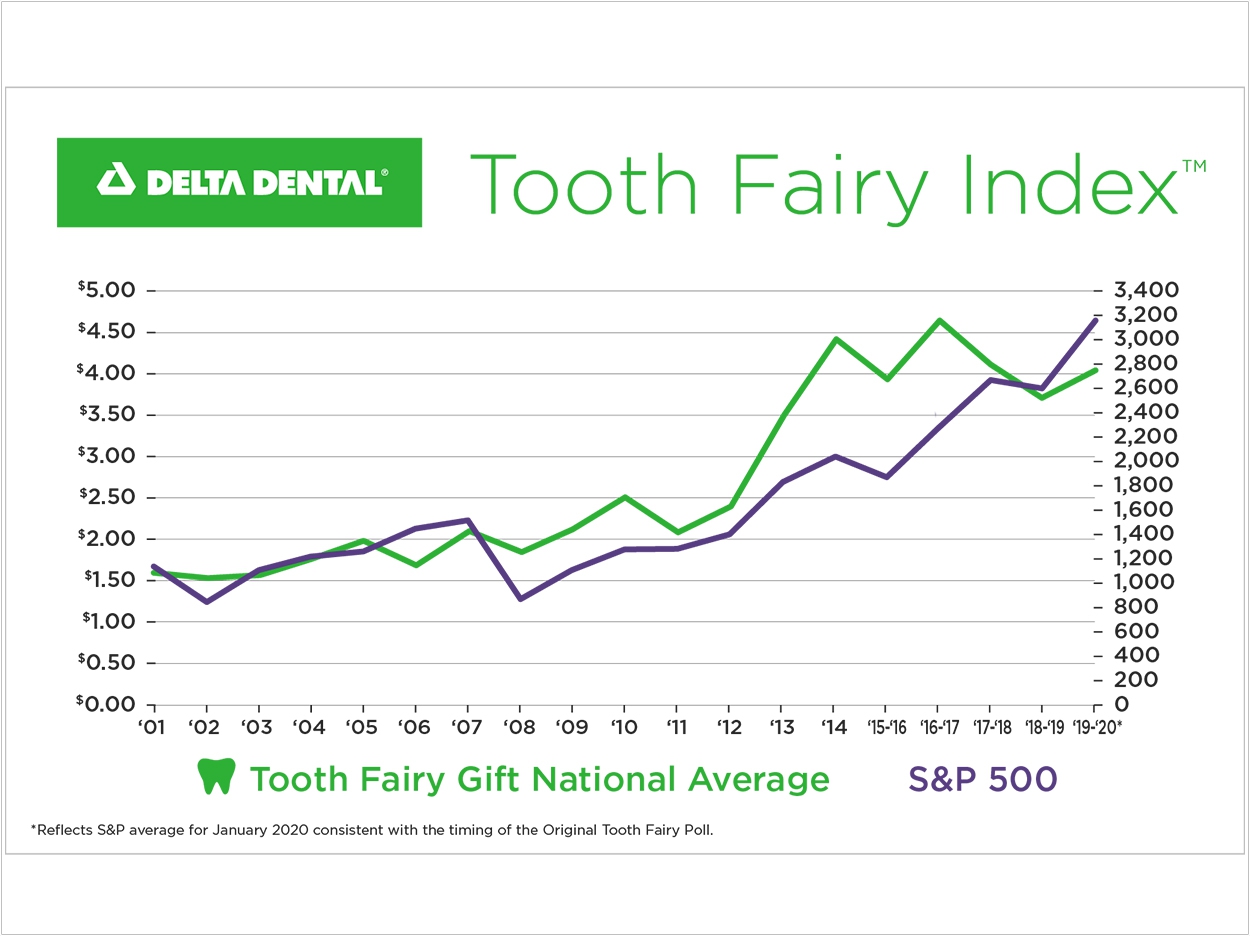
According to a recent survey by Delta Dental, 80% of households with children are visited by the Tooth Fairy, and these visits are motivated by a desire to give children something to be excited about, according to more than half of the caregivers polled.
Also, 45% of caregivers report that having the Tooth Fairy visit gives them a reason to celebrate, and 42% said it makes their child feel special. And beyond celebrating a lost tooth, these visits instill good oral health habits in a positive way, according to a third of respondents.
Noting the role the Tooth Fairy can play in encouraging positive oral health habits, Delta Dental has created online educational materials including activities and games for families to learn from and enjoy.
Plus, according to the Original Tooth Fairy Poll, the Tooth Fairy’s average cash gift increased 30 cents for a lost tooth since last year for a total of $4.03 per tooth. That’s more than triple the value of a lost tooth in 1998, when Delta Dental began taking the poll and a lost tooth was worth $1.30, and the fourth highest payout in the history of the survey.
The Original Tooth Fairy Poll has typically mirrored the economy’s overall direction, tracking with the trends of Standard & Poor’s 500 Index for 15 of the past 18 years. Last year, a single lost tooth was valued at $3.70. This year’s $4.03 average represents an increase of nearly 9%.
Over the same time period, the S&P 500 also experienced growth, with a 22% increase, reaching its highest average since the inception of the Original Tooth Fairy Poll.
“The Tooth Fairy is one of healthcare’s most powerful tools for teaching children about their oral health. By celebrating a lost tooth, children begin to learn the importance of their oral health in an engaging and fun way,” said Jennifer Elliott, chief marketing officer of the Delta Dental Plans Association.
The Original Tooth Fairy Poll was conducted between December 30, 2019, and January 11, 2020, among a nationally representative sample of a thousand parents of children between the ages of 6 and 12.
Related Articles
Cash on Hand Determines What the Tooth Fairy Gives
Extractions Increase by 17% Among Children in England
Childhood Antimicrobial Use Impacts Oral Microbiome












